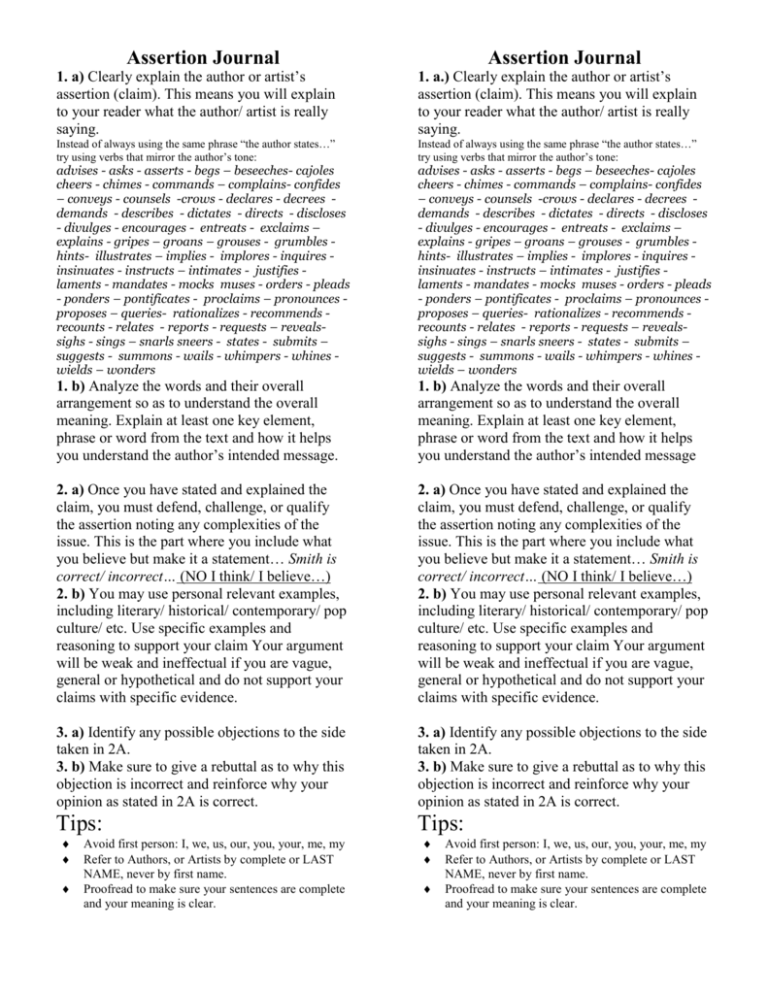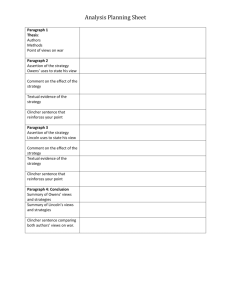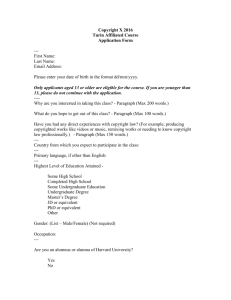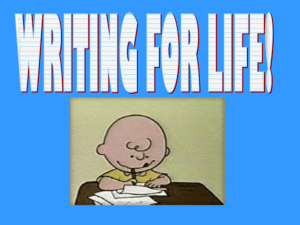Assertion Journal
advertisement

Assertion Journal Assertion Journal 1. a) Clearly explain the author or artist’s assertion (claim). This means you will explain to your reader what the author/ artist is really saying. 1. a.) Clearly explain the author or artist’s assertion (claim). This means you will explain to your reader what the author/ artist is really saying. Instead of always using the same phrase “the author states…” try using verbs that mirror the author’s tone: Instead of always using the same phrase “the author states…” try using verbs that mirror the author’s tone: advises - asks - asserts - begs – beseeches- cajoles cheers - chimes - commands – complains- confides – conveys - counsels -crows - declares - decrees demands - describes - dictates - directs - discloses - divulges - encourages - entreats - exclaims – explains - gripes – groans – grouses - grumbles hints- illustrates – implies - implores - inquires insinuates - instructs – intimates - justifies laments - mandates - mocks muses - orders - pleads - ponders – pontificates - proclaims – pronounces proposes – queries- rationalizes - recommends recounts - relates - reports - requests – revealssighs - sings – snarls sneers - states - submits – suggests - summons - wails - whimpers - whines wields – wonders advises - asks - asserts - begs – beseeches- cajoles cheers - chimes - commands – complains- confides – conveys - counsels -crows - declares - decrees demands - describes - dictates - directs - discloses - divulges - encourages - entreats - exclaims – explains - gripes – groans – grouses - grumbles hints- illustrates – implies - implores - inquires insinuates - instructs – intimates - justifies laments - mandates - mocks muses - orders - pleads - ponders – pontificates - proclaims – pronounces proposes – queries- rationalizes - recommends recounts - relates - reports - requests – revealssighs - sings – snarls sneers - states - submits – suggests - summons - wails - whimpers - whines wields – wonders 1. b) Analyze the words and their overall arrangement so as to understand the overall meaning. Explain at least one key element, phrase or word from the text and how it helps you understand the author’s intended message. 1. b) Analyze the words and their overall arrangement so as to understand the overall meaning. Explain at least one key element, phrase or word from the text and how it helps you understand the author’s intended message 2. a) Once you have stated and explained the claim, you must defend, challenge, or qualify the assertion noting any complexities of the issue. This is the part where you include what you believe but make it a statement… Smith is correct/ incorrect… (NO I think/ I believe…) 2. b) You may use personal relevant examples, including literary/ historical/ contemporary/ pop culture/ etc. Use specific examples and reasoning to support your claim Your argument will be weak and ineffectual if you are vague, general or hypothetical and do not support your claims with specific evidence. 2. a) Once you have stated and explained the claim, you must defend, challenge, or qualify the assertion noting any complexities of the issue. This is the part where you include what you believe but make it a statement… Smith is correct/ incorrect… (NO I think/ I believe…) 2. b) You may use personal relevant examples, including literary/ historical/ contemporary/ pop culture/ etc. Use specific examples and reasoning to support your claim Your argument will be weak and ineffectual if you are vague, general or hypothetical and do not support your claims with specific evidence. 3. a) Identify any possible objections to the side taken in 2A. 3. b) Make sure to give a rebuttal as to why this objection is incorrect and reinforce why your opinion as stated in 2A is correct. 3. a) Identify any possible objections to the side taken in 2A. 3. b) Make sure to give a rebuttal as to why this objection is incorrect and reinforce why your opinion as stated in 2A is correct. Tips: Tips: Avoid first person: I, we, us, our, you, your, me, my Refer to Authors, or Artists by complete or LAST NAME, never by first name. Proofread to make sure your sentences are complete and your meaning is clear. Avoid first person: I, we, us, our, you, your, me, my Refer to Authors, or Artists by complete or LAST NAME, never by first name. Proofread to make sure your sentences are complete and your meaning is clear. Assertion Journal Rubric Assertion Journal Rubric 10 points 10 points ____ Paragraph 1 part a ____ Paragraph 1 part a ____ Paragraph 1 part b ____ Paragraph 1 part b ____ Paragraph 2 part a ____ Paragraph 2 part a ____ Paragraph 2 part b ____ Paragraph 2 part b ____ Paragraph 3 part a ____ Paragraph 3 part a ____ Paragraph 3 part b ____ Paragraph 3 part b ____ Refer to author by last name or full name only ____ Refer to author by last name or full name only ____ Written in complete sentences ____ Written in complete sentences ____ Meaning is clear ____ Meaning is clear ____ Arguments are sound ____ Arguments are sound








